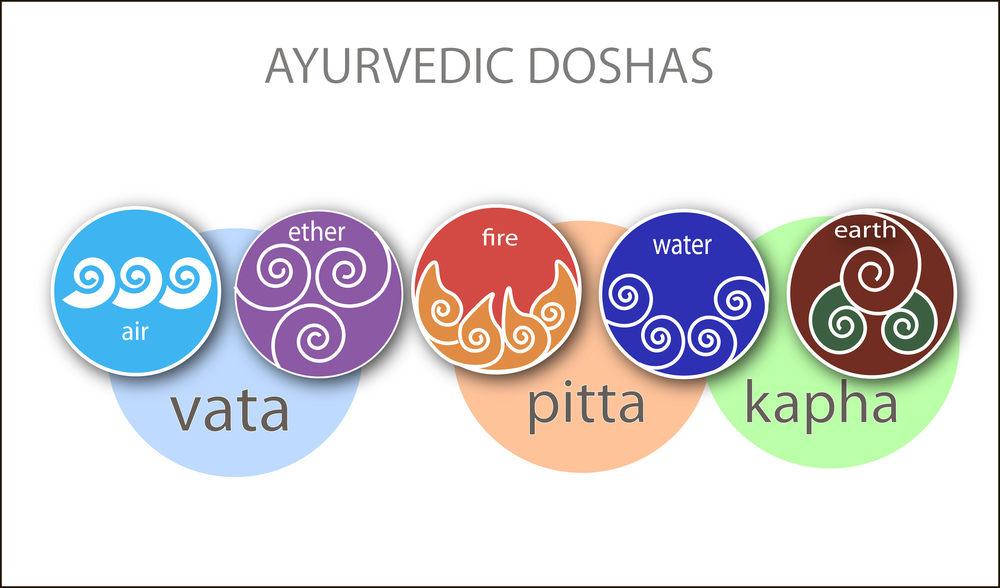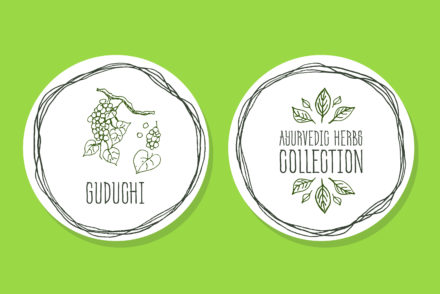What Are Doshas, and why are they important to Ayurveda?
In the eastern healing tradition of Ayurveda, well-being is an extremely individualised affair. What works for one person may not always have the same desirable effect on the other person, even if they share the same physical traits. Some people show vulnerability towards particular food or weather, while others seem quite unaffected by it.
If you have ever wondered why your friend can eat anything and everything she wants and never gain weight as much as you do, Ayurveda can explain this. The answer to the mystery of why the same thing works differently for two people may lie in their different constitutions (Prakriti). Every person has a different bio-genomic makeup, different behavioural traits, inclinations, and vulnerabilities because of her uniqueness that lies in her unique constitution of Doshas.

The Five Fundamental Elements
According to the ancient Ayurvedic philosophy, every material existence in this universe is made up of five fundamental elements – earth, water, fire, air, and ether (space). Every element has its unique characteristics; for example, the air is moving and light, while the earth element is stable, heavy, and grounded.
In nature, these elements combine in varying proportions to create distinct forms of matter. In living beings, these five elements combine to form three bodily energies (Doshas) that perform and regulate all the physiological functions essential for life. Every form of life – you, your pet, the bacteria living in your gut, bloodsuckers, insects, birds are all ruled by these three energies. Life cannot be sustained even if one of the Doshas is absent.

Dosha – Meaning ‘the faulty one’
Dosha literally means the one that is faulty or prone to corruption. In other words, doshas are the vital energies that often go corrupt. Doshas should not be understood as some static form of matter. Rather, these are dynamic energies affecting and being affected by the present conditions every moment. In normal times, these energies work in dynamic equilibrium to support a healthy and disease-free life. When this dynamic equilibrium is disturbed because of environmental conditions or carelessness, one or more of these doshas go out of balance. Vitiation of doshas is considered as the root cause of all diseases in Ayurveda. When one or more of these constructive forces accumulate too much in the body, they acquire a destructive nature and start affecting everything from body to mind and emotions.
All three doshas are intrinsically different energies responsible for governing distinct physiological functions and psychological responses of an individual. Each of these doshas – Vata, Pitta, and Kapha has a distinct and recognizable group of qualities.
1. Vata
Air and ether (space) combine to form the energy of Vata that governs all forms of movement in the body. Breathing, blood circulation, waste discharge, movement of food inside the body, transfer of nutrients, working of the nervous system are all ruled by Vata dosha. Its function in the body is catabolic in nature. When in proportion, it gives keen senses, clarity of thought, original thinking, creativity, proper and consistent waste elimination, and a healthy respiratory system. When Vata is vitiated, these vital functions of the body are disturbed. Constipation, poor memory, uncertainty, anxiety, dry skin, difficulty in breathing, and asthma are some of the signs of Vata imbalances.
The defining features of Vata dosha are the same as that of air and space. It is creative and mobile energy characterized by light, cold, dry, moving, rough, irregular, and clear qualities. Too much of any of these qualities can aggravate this energy. For example, dry and windy conditions of the autumn season can aggravate Vata. Similarly, indiscipline and lack of routine can cause constipation. Dry and frozen foods can further increase Vata, especially during winters.
2. Pitta
Fire and water combine to form the powerful transformative energy of Pitta that is capable of chemical change. All kinds of transformations taking place inside the body are governed by the fire energy. Digestion, breaking down of food, oxidation, hormonal actions, enzymes, energy generation are all ruled by Pitta dosha. Its function in the body is metabolic in nature. It is the primary force required for digesting the food, and since good digestion is considered as the key to a healthy body in Ayurveda, a balanced Pitta is crucial for maintaining optimal health. It is characterized by sharp, penetrating, hot, liquid, and oily qualities. Hot weather and oily food can aggravate Pitta, whereas cold and light conditions can bring it back to balance.
When in proportion, Pitta gives focus, motivation, sharp mind, quick metabolism, healthy appetite, and steady hormones. When fire energy accumulates too much, it causes anger, jealousy, aggressive reactions, acid reflux, diarrhea, oily skin, rashes, pimples, skin disorders, over competitiveness, hormonal imbalances, and painful menstruation.
3. Kapha
Kapha is the resulting combination of earth and water. Its qualities are similar to that of the earth element that is stable, heavy, slow, dense, dull, cool, and sticky. It is the anabolic function that governs cohesion and lubrication. Kapha dosha is responsible for providing the body its structure and form. It provides density to the bones, builds tissues, and generates mucus to lubricate the joints. The slow, heavy, stable qualities of Kapha are responsible for providing stability, discipline, good memory, and patience.
When in balance, Kapha is responsible for strong tissues, well-lubricated joints, and a calm mind. When it goes out of balance, it causes obesity, water retention, sinuses, allergies, congestions, excessive mucus production, heavy heartedness, and sadness. Lack of physical activity and cold conditions can aggravate Kapha, while warm, pungent, and astringent foods can bring it back to balance.
Finding out about your Dosha
Learning and understanding your Dohsa is key to understanding and living life using Ayurvedic techniques. Different Doshas have different recommendations, different needs and so each individual’s lifestyle in Ayurvedia is different too. There are many places and ways you can find out about your Dosha, and which Dosha are more prominant in your body, but the most common kind is to take a quiz.
Here we’ve listed out the best online quizzes you can take.




